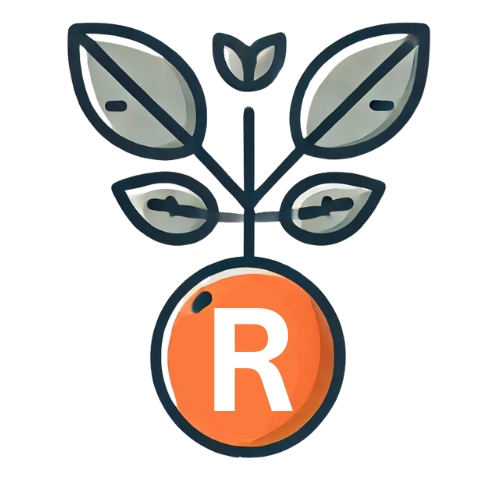
Planning for your child’s financial future is one of the most practical steps you can take as a parent or guardian in South Africa. With education costs rising and household budgets often stretched, starting early with a clear investment strategy can make a lasting impact. Whether you’re aiming to fund school fees, university costs, or provide a financial head start, there are several structured, tax-efficient options available.
Key Takeaways
- Start Early To Maximise Growth: Investing from birth allows compound interest to build over many years, significantly boosting the funds available for your child’s education.
- Choose The Right Investment Tool: Retirement annuities, tax-free savings accounts, and unit trusts each offer different benefits and tax implications, depending on your long-term goals and access needs.
- Explore Funding Support Options: In addition to personal savings, students can access financial aid through NSFAS, scholarships, bursaries, grants, and employer support to help reduce the burden of education costs.
About Arcadia Finance
Get your loan the easy way with Arcadia Finance. No application fees, just access to 19 trusted lenders regulated by South Africa’s National Credit Regulator, ensuring safe and reliable choices for your needs.
Why It Makes Sense To Start Saving For Your Children As Early As Possible
Starting to invest in your child’s future from birth means you are giving yourself a head start of at least six years before they even begin formal schooling. This initial period allows your investment to grow steadily over time, increasing its potential to accumulate meaningful returns.
By the time your child enters high school and begins considering options for life after matric, that early investment will have matured over a 13-year period, benefiting significantly from compound growth. This extended timeframe not only strengthens the investment but also gives you the opportunity to monitor progress and assess whether you need to adjust your contributions to better align with your child’s academic goals and preferences.

What Is Education Inflation?
Education inflation refers to the pace at which the costs associated with schooling and tertiary education increase over time. In most cases, this rate of increase is higher than that of general income growth across the population.
This means that the price of tuition, textbooks, school supplies, and related academic expenses tends to rise more rapidly than the overall cost of living. As a result, many parents may find it increasingly difficult to put aside sufficient funds to cover their child’s university education when the time comes.
Regardless of whether your financial objective is to support your child’s education in the near future or over a longer period, the most effective time to begin setting money aside is right now.
A Close Look at The Cost Of Education In South Africa
According to recent data, annual fees at public primary schools in South Africa average around R22,600, while private primary schools typically charge about R66,200 per year. For high school education, the cost rises to approximately R33,400 annually at public institutions, compared to around R97,200 each year for private high schools.
Beyond standard tuition fees, families must also account for several additional expenses that can significantly increase the overall cost of education. These include:
- School uniforms
- Textbooks and study materials
- Stationery and supplies
- Daily transport costs
- Meals and lunch provisions
- Supplementary tutoring or extra classes
- Participation in extramural activities
After completing primary and secondary education, students who are not eligible for support from the National Student Financial Aid Scheme (NSFAS) will have to fund their own tertiary studies, which presents a further financial obligation for families.
Teach Accountability By Involving Your Children
Actively include your children in the savings process for their education, especially as they grow older and begin to develop a better understanding of numbers, budgeting, and financial principles. Doing so provides a meaningful learning experience and helps reinforce key lessons such as the value of money, delayed gratification, and the discipline required to save consistently.
By participating in this journey, they will not only benefit from access to quality education but also gain important financial habits and practical life skills that will serve them well throughout adulthood.

How You Can Invest Early And Compound Returns
This section outlines a few long-term investment scenarios to illustrate how compound growth can benefit a child’s financial future. Each example assumes a 6% annual return after inflation, meaning the values shown reflect present-day purchasing power. These figures do not account for any increases in monthly contributions over time, nor do they include the impact of investment fees.

Retirement Annuity
Should you contribute R1 000 per month into a retirement annuity (RA) in your child’s name from birth until they turn 18, the total contribution would amount to R216 000. However, the value of this investment by the end of that period would be approximately R387,000 in today’s money. If your child then continues contributing the same amount every month until reaching the age of 55, they would add another R444,000. In total, R660,000 would have been invested, but by age 55, the fund could be worth around R5,170,000 in present value. This outcome clearly demonstrates the significant effect of compounding over time.
Most of the funds in a retirement annuity are only accessible at retirement age, which is currently set at 55. Although emergency withdrawals may be possible under the new two-pot retirement system, the bulk of the savings remains inaccessible until then. One of the main benefits of an RA is that it is protected from creditors, and contributions such as the R12,000 annually could reduce the contributor’s income tax burden depending on their marginal tax rate. Another advantage appears at retirement: when converting the RA into a living or life annuity, capital gains tax is not applied to the investment growth. This makes an RA a tax-efficient and relatively secure method for long-term retirement savings.

Tax-Free Savings Account
A tax-free savings account (TFSA) should be viewed as an investment vehicle rather than a typical bank savings account. Through a TFSA, individuals can invest in a broad range of available funds in South Africa, allowing for compound growth similar to the RA scenario, though some key legislative differences apply.
Just as with an RA, all growth in a TFSA is exempt from tax, including capital gains and dividends. However, funds in a TFSA can be accessed at any time, and withdrawals incur no tax penalties, offering greater liquidity. While this flexibility is a major benefit, the product is governed by strict contribution limits: a maximum of R36,000 per year and a lifetime cap of R500,000. Importantly, once money is withdrawn from a TFSA, those contribution limits are not reset. For instance, if your child contributes R100,000 over five years and then withdraws the entire amount along with its returns, they would only be able to contribute an additional R400,000 thereafter due to the lifetime limit.
An additional advantage is that TFSAs are not subject to the 45% offshore allocation restriction that applies to RAs and other retirement products. This means your child could invest in funds tracking indices such as the Nasdaq 100 or MSCI World, offering greater exposure to global equities that are dominated by international companies.

Unit Trusts
When held over an extended period, unit trusts have the potential to deliver compound growth on par with RAs and TFSAs, depending on the chosen fund. However, they are governed by different rules and should be considered accordingly.
Unlike RAs or TFSAs, unit trusts have no contribution limits and do not place restrictions on offshore exposure. This gives investors the freedom to invest any amount and withdraw funds at their discretion. However, this flexibility comes with tax consequences. Any withdrawals exceeding R40,000 annually are considered a capital gain event, and your child would be taxed at their applicable income tax rate. Furthermore, the investment growth within a unit trust is subject to capital gains tax, unlike TFSAs and RAs, which enjoy more favourable tax treatment.
Although unit trusts are generally straightforward to understand and manage, they should be used with careful planning, especially in comparison to products like the RA and TFSA, which offer stronger tax advantages and structured incentives for long-term investing.

Top Tips For Investing In Your Child’s Future
- Start With A Clear Plan: Estimate future costs, choose a suitable investment, and contribute to it monthly.
- Schedule Debit Orders Early: Set debit orders for the start of each month to maintain consistency.
- Check Investment Guarantees: Review any guarantees or protections offered by your chosen investment.
- Cover Children In Insurance: Ensure your children are included in your life cover or listed as beneficiaries.
- Use Licensed Financial Advisers: Get advice from authorised advisers. While there’s a cost, the guidance can be valuable.
- Request Family Contributions: Ask family and friends to contribute to the savings plan instead of giving gifts.
Common Mistakes to Avoid
When investing for your child’s future, avoiding costly mistakes can make a big difference in the growth of your funds. Here are five common errors parents often make:
| Mistake | Description |
|---|---|
| Investing Without a Clear Plan | Many parents start saving without defined goals. Without a clear objective, such as funding education or building long-term wealth, it becomes difficult to select suitable investment options or track progress effectively. |
| Starting Too Late | Delaying investments reduces the power of compounding. Early contributions, even if small, can grow significantly over time, while late investing often requires much larger amounts to reach similar targets. |
| Ignoring Inflation | If investments fail to keep up with rising living and education costs, the value of savings decreases over time. Selecting growth-focused investments that outpace inflation is crucial for success. |
| Overlooking Tax Benefits | South Africa offers tax-free savings accounts and other tax-efficient products for children’s investments. Failing to take advantage of these options can lead to missed growth opportunities and unnecessary tax payments. |
| Not Reviewing Investments Regularly | Markets, interest rates, and personal circumstances change over time. Without periodic reviews, your strategy may no longer align with your child’s future needs, reducing its effectiveness. |
Conclusion
Planning ahead for your child’s future can ease the financial pressure of education and provide them with the foundation they need to succeed. By starting early, selecting the right investment products, and exploring all available funding options, parents in South Africa can prepare for rising education costs with greater confidence. Whether you opt for a retirement annuity, tax-free savings account, or unit trust, the key lies in consistency, awareness of tax implications, and involving your child in the process where appropriate. When combined with bursaries, scholarships, and government aid like NSFAS, these strategies can make education more accessible and affordable.
Frequently Asked Questions
Yes, a parent or guardian can open a TFSA in their child’s name. All contributions count towards the child’s lifetime limit, and any withdrawals will not reset that cap.
A TFSA offers better tax advantages as no capital gains or dividends tax applies, but it has contribution limits. A unit trust provides more flexibility and no limits but may attract tax on growth.
The minimum monthly contribution varies by provider, but it typically starts from around R500 to R1,000. It’s best to check with individual financial service providers.
Many investment products allow for flexible contributions, so you can pause or adjust payments when necessary. However, consistent contributions will help you reach your goals more effectively.
Yes. Students can apply for both. If approved for multiple funding sources, some institutions may coordinate the funding, or one may supplement what the other does not cover.
Fast, uncomplicated, and trustworthy loan comparisons
At Arcadia Finance, you can compare loan offers from multiple lenders with no obligation and free of charge. Get a clear overview of your options and choose the best deal for you.
Fill out our form today to easily compare interest rates from 19 banks and find the right loan for you.



